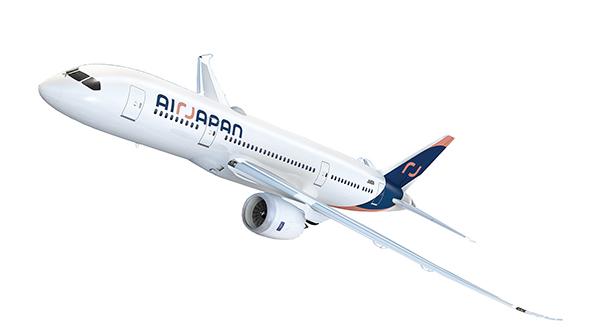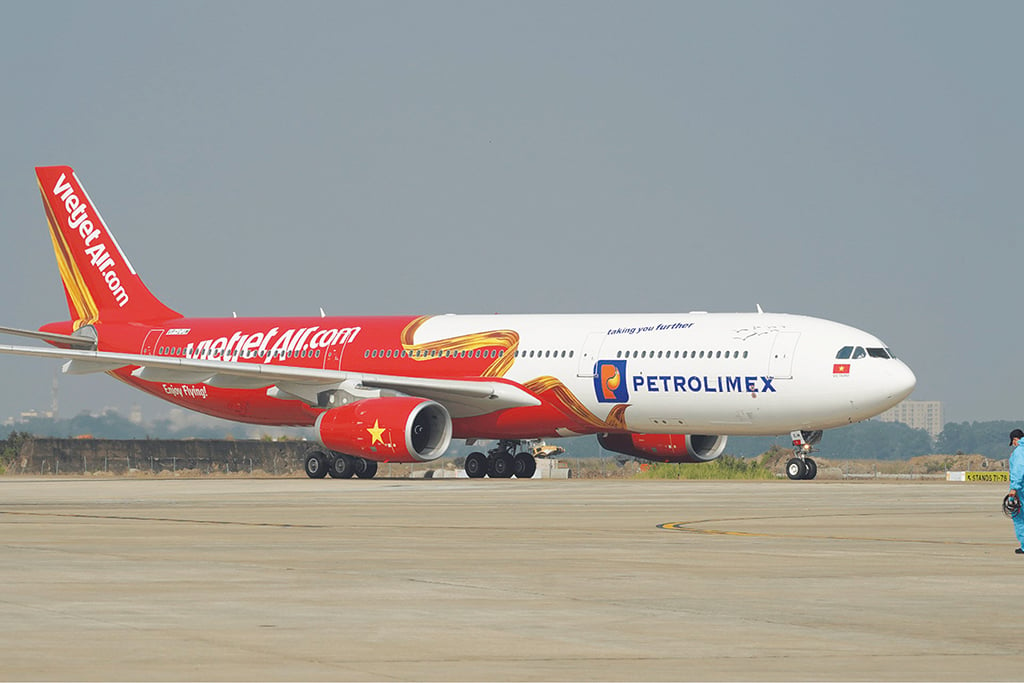
AirJapan, All Nippon Airlines’ new LCC subsidiary, will begin Boeing 787-8 flights to Bangkok and Seoul in February.
The Asia-Pacific region has witnessed a notable surge in the adoption of widebodies by LCCs for medium- and long-haul routes in recent years and the trend shows no sign of slowing, with a rising number of airlines either entering the market or expanding their existing fleets.
LCCs in the region have a combined fleet of 116 widebodies in service, data provided by OAG shows, which is up by 10% on pre-pandemic levels and equates to three-quarters of the LCC widebody fleet globally. For comparison, just 17 widebody aircraft are operated by LCCs in Europe, 11 in Latin America, seven in North America, and three in the Middle East.
All Nippon Airways (ANA) is the latest to embrace the model through the launch of subsidiary AirJapan, a former charter carrier established in the 1990s that has transitioned into an all-Boeing 787-8 operator. AirJapan’s first routes as a medium- to long-haul LCC are to Bangkok and Seoul from February, with more destinations to be added as the fleet increases.

“Beginning with Asian flights departing from Tokyo Narita Airport, we plan to gradually expand the AirJapan brand into other parts of the globe while continuing to operate ANA flights throughout Asia,” AirJapan president and CEO Hideki Mineguchi said.
Points in Southeast Asia and Oceania are expected to be the initial focus during the first few years.
Mineguchi, an ANA veteran of more than 30 years, explained that the new carrier meets the needs of “evolving global travel preferences” and ties in with the Japanese government’s target of attracting 60 million foreign visitors to the country by 2030. Although the recovery of outbound travel from Japan since the pandemic has been sluggish because of the depreciation of the yen, inbound traffic has now surpassed 2019 levels, reaching 2.5 million monthly international arrivals in October 2023.
AirJapan will also enable ANA to better compete with Japan Airlines’ (JAL) Zipair Tokyo brand, which started flights less than four years ago and is expanding using a fleet of eight 787-8s. Initially launched as a cargo-only operation in June 2020 because of the pandemic, Zipair began passenger service four months later. Since then, the LCC has expanded its network to eight destinations from Tokyo Narita, including Los Angeles and San Francisco, with plans to debut flights to Vancouver on Canada’s west coast in March.
JAL’s initiative has so far proven to be a success, with Zipair’s monthly passenger traffic exceeding 100,000 in the quarter ending September 2023, representing a 172% increase compared to the previous year. The group attributed this growth to robust inbound demand and noted that Zipair was attracting a distinct customer composition compared to JAL’s mainline operations.
EXTENDING NETWORKS
Alongside startups AirJapan and Zipair, other LCCs in the Asia-Pacific region have begun to diversify their fleet mix with widebodies. Vietnam’s VietJet is one such example following the arrival of its first Airbus A330-300 in late 2021. Adding to more than 80 A320-family aircraft—and orders for over 250 Airbus and Boeing narrowbody jets—the airline now has seven A330s, which have enabled the expansion of its network to Australia. VietJet flies nonstop from Ho Chi Minh City to Brisbane, Melbourne and Sydney using A330s, as well as operating service to India’s capital New Delhi.
Although the arrival of the aircraft has brought added complexities to the business model, VietJet director Chu Viet Cuong said the carrier would like to take three or four more widebodies—potentially A330neos—that could open new destinations on the US west coast like California.
“We need more and more and more aircraft to grow and to replace older aircraft,” he said, pointing out that widebodies allow the LCC to access new markets beyond the range of its narrowbodies.
South Korea’s second-largest LCC, T’way Air, also commenced widebody flights in March 2022, initially putting its first A330-300 to use between Seoul Gimpo and the island of Jeju, a short 280-mi. (243-nm) sector that is the busiest domestic passenger route in the world. Flights from Seoul Incheon to Bangkok Suvarnabhumi and Singapore Changi followed, along with the launch of its first long-haul route—to Sydney—in December 2022.
CEO Jeong Hong-geun said the introduction of the A330s helped T’way enjoy its best-ever year in 2023, facilitating expansion in markets like Chitose and Osaka in Japan, as well as being able to better match supply and seasonal demand to cities like Ulaanbaatar, the capital of Mongolia. Additionally, the volume of belly cargo carried by the LCC rose from 6,675 tons in 2022 to 15,000 tons in 2023, pushing revenues higher.
T’way now has a fleet of 30 aircraft—comprising three A330s, 25 737-800s and two 737 MAX 8s—and expects to take delivery of a further seven aircraft this year. It is understood that more widebodies will be among those deliveries. Hong-geun said “the sprouts of growth are growing vigorously” and hinted that service to Europe and the US was under review.
Hang Zhao, a consultant at aviation consultancy ASM, pointed out that challenges among full-service carriers in certain countries—like the ongoing delay to the merger between Korean Air and Asiana Airlines in South Korea—are also giving confidence to operators such as T’way to explore medium- and long-haul routes.
This may also be the year that IndiGo reveals the full extent of its widebody ambitions. India’s largest airline inducted its first 777-300ER, wet-leased from Turkish Airlines, in February 2023 and has since added three more of the type, deployed on routes from Delhi and Mumbai to Istanbul. However, an order for about 25 widebodies has long been mooted, with the 787-family and A330neo thought to be under consideration.
Capital A of Malaysia (formerly AirAsia Group) is also rumored to be discussing a new widebody order with Airbus as part of plans to establish a multi-hub network. The company’s long-haul operator, AirAsia X, will be acquiring all of AirAsia’s short-haul AOCs from Capital A into a single entity, as the LCC group charts out a new fleet and network expansion plan. The move will see AirAsia Berhad (AirAsia Malaysia) and AirAsia Aviation Group Limited (AirAsia subsidiaries in Thailand, Indonesia, Philippines, and Cambodia) merged with AirAsia X and the latter brand scrubbed into a mixed fleet carrier group.
Meanwhile, Philippine LCC Cebu Pacific will continue taking delivery of A330neos this year to replace its aging A330-300s. Similarly, Singapore Airlines subsidiary Scoot has an existing order for three more 787s scheduled for delivery over the coming years.
While narrowbodies will remain the mainstay for Asia-Pacific LCCs, airlines in the region are increasingly acknowledging the benefits of diversifying their fleet mix. Fueled by a desire for enhanced flexibility, greater capacity and extended range, coupled with an emphasis on bolstering cargo capabilities, the Asia-Pacific LCC landscape looks set for ongoing growth in widebody aircraft adoption.





